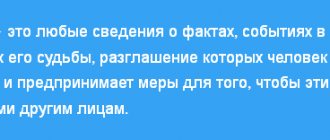Violations of the law can vary widely. The main characteristic of a crime is the severity of the act committed, but there are other important features. Article 15 of the Criminal Code of the Russian Federation classifies crimes into simple and more complex, which include a continuing crime.
It can be difficult to establish the beginning and end of such an action, which can cause certain difficulties, especially when establishing the details of a violation of the law.
Some crimes can “survive” the political system, be inherited and even transformed over time into a legalized type of activity, which is why it is so important to be able to promptly identify and suspend ongoing acts that violate existing laws.
What it is
In legal practice, continuing crimes are not uncommon. Many violations of the law can continue for years and often end only with the death of the person who violated the law.
Free legal consultation
+8 800 100-61-94
It can be quite difficult to establish the fact of a violation of the law that continues over time, but assigning it to a certain category does not present any difficulties. Crimes of this type are violations of the law, which are manifested in the commission of any actions with subsequent prolongation.
The category of violations of existing laws that continue over time includes not only actions, but also inactions of both officials and ordinary citizens. For example, illegally leaving a place of work can lead to extremely dangerous situations, which often lead to death or damage to property.
Failure to report to law enforcement agencies about an impending terrorist act can also be regarded as a continuing violation of the law, since such operations are often carefully planned and their detailed study can continue for a long time.
Important! It is possible to break the law with the “effect” of prolongation even when subpoenas to court or the military registration and enlistment office are ignored.
On the phenomenon of “continuing crimes” and the “time spiral”
There is not much time left to wait until the Supreme Court of the Russian Federation decides on the qualification of tax crimes as lasting or not lasting.[1]
The positions of lawyers involved in the dispute over such qualifications are based on the fact that this difference objectively exists.
Meanwhile, this statement, which no one argues with (the author does not know otherwise) [2], can be questioned.
Continuing crimes
The definition of a continuing crime is given in Resolution 23 of the Plenum of the Supreme Court of the USSR of March 4, 1929 (as amended by the Resolution of the Plenum of the Supreme Court of the USSR of March 14, 1963 No. 1): “This kind of crime, called continuing, is characterized by the continuous implementation of a certain criminal act. A continuing crime begins with some criminal act (for example, with unauthorized absence) or with an act of criminal inaction (with failure to report a crime). Consequently, a continuing crime can be defined as an act or omission accompanied by a subsequent long-term failure to fulfill the duties imposed on the offender by law under threat of criminal prosecution.”
This definition assumes that for each ongoing crime there must be a rule of law establishing a certain obligation, failure to fulfill which is punishable by criminal law.
An obligation that is not specified in terms is void. Otherwise, the offender can easily refer to the fact that the deadline for fulfilling the obligation has not yet arrived, which will mean that the offense itself did not occur.
It is easy to see that both examples given in the Plenum refute the very definition that they are intended to illustrate.
Unauthorized absence is leaving a military unit without legal grounds. Even if there are no witnesses to the commission of this crime, it is quite easy to determine the moment when the crime was committed - this is the day when the serviceman was not at mandatory formation (evening roll call) and his search on the territory of the military unit was not crowned with success. It is from this date that the period for bringing a person to criminal liability should begin to run, since from that time the victim (the state represented by the military unit) knew or should have known about the violation of his rights (to receive military service). The further behavior of the criminal, his goals, motives do not matter to the qualification of the crime as completed (completed, completed).
Failure to report a crime also has the property of being completed from the moment when a person learned about the fact of a crime (occurring or impending) and had a real opportunity to report it to the competent authorities. There are no legal grounds to consider it lasting, if only because no law has established specific deadlines for reporting a crime (otherwise in the example of the Resolution of the Plenum of the Supreme Court of the USSR it is not indicated).
It turns out that in order for a crime to last, it is necessary to “attach” actions to restore the violated right to it.
For example:
- if the theft is “paired” with subsequent long-term non-return of the stolen property,
— rape is “associated” with long-term failure to make amends for moral damage to the victim,
— the abduction of a person is “coupled” with long-term detention in captivity,
— the murder of a person is associated with his long-term non-resurrection, etc.
It is noteworthy that in all the examples given, we will not find legal norms that would impose the listed obligations on the perpetrator (to restore the violated rights of the victim) under the threat of criminal prosecution.[3]
The conclusion suggests itself: an unscrupulous state arbitrarily declares crimes to last until the moment the criminal is caught, thereby leveling the institution of limitation of bringing a person to criminal responsibility.
But the rule of law[4] does not have the right to do this, since the institution of prescription has a number of important legal functions:
- Stabilizing function. The point is that prescription contributes to the stability of law and order and civil circulation, eliminates the uncertainty of social relations;
- Protective. Prescription prevents abuse of rights;
- Disciplining. It consists of encouraging subjects of legal relations to timely exercise their rights and fulfill their obligations;
- Humanistic. Prescription serves as a means of realizing the principle of humanism.
- Security. Justice requires evidence (both prosecution and defense), which is lost over time.[5]
It is noteworthy that in the criminal code itself (both the RSFSR and the Russian Federation) there is no definition of a “continuing crime”.
A natural question arises: why then did the Supreme Court of the USSR introduce this concept into legal circulation?
The timing of this Resolution may help with the answer.
Time requirement
It is known that 1929 ended the period of the “first Soviet economic thaw” - NEP and preceded the period of the Great State Terror (collectivization, industrialization, militarization), which also required judicial justification for mass repressions.
In these historical conditions, it was beneficial for the terrorist state to criminalize all spheres of civil life as much as possible and to sow fear in society. This had completely rational goals: to create a free labor army of prisoners (the Gulag system) and to suppress the will of citizens to resist with massive and arbitrary arrests and loss of rights.
Naturally, these goals were also served by the removal of the maximum number of criminal offenses from amnesty by recognizing them as “continuing crimes.” It is no coincidence that the list of continuing crimes in this Resolution is open: this makes it possible to expand it arbitrarily.
Taken together, this gave the necessary effect: the population ceased to consider themselves in complete legal security, agreeing that “the authorities know best,” “the innocent are not imprisoned,” and the state was able to dispose of the population as its property.
What happened in the USSR after 1929?
On August 7, 1932, the Council of People's Commissars, together with the Central Executive Committee of the USSR, adopted a resolution tightening responsibility for the theft of socialist property. “Meeting the demands of workers and collective farmers,” it was signed by the Chairman of the Central Executive Committee - “All-Union Elder” Mikhail Kalinin and the Chairman of the Council of People’s Commissars, Comrade Molotov (aka Scriabin).
The property of collective farms and cooperatives (including crops in the fields), as well as transported goods, were equated to state property. His theft (even of ears of corn from the field) was punishable by the “highest measure of social protection” - execution with confiscation of all property. In the presence of mitigating circumstances, criminals could be sentenced to imprisonment for a term of at least 10 years with confiscation. Acts of amnesty were not applied to plunderers of socialist property.
At the same time, a “decisive struggle against anti-social kulak-capitalist elements who use violence and threats or advocate the use of violence and threats against collective farmers in order to force the latter to leave the collective farm” was announced. These acts were equated to state crimes. The Council of People's Commissars promised the instigators "measures of judicial repression" - imprisonment for a term of 5 to 10 years with imprisonment in a concentration camp.
Among the thieves, the decree was called “decree 7-8.” It was under this name that it became known to the Soviet audience thanks to the television film “The Meeting Place Cannot Be Changed,” based on the Weiner brothers’ novel “The Era of Mercy.” Captain Zheglov promised (“sewed”) 10 years in the camps to Ruchechnikov, who was caught stealing the fur coat of the English ambassador, for which the management of the Bolshoi Theater (that is, the state) would have to pay compensation.
It is interesting that in July 1936, the USSR Prosecutor General A. Ya. Vyshinsky prepared a memorandum with extremely interesting statistics: the USSR prosecutor's office checked 115 thousand sentences passed under the “decree “7-8””, and in more than 91 thousand cases the application of this decree was considered wrong and criminal. Based on these checks, Vyshinsky in 1936 proposed to rehabilitate 37 thousand people illegally executed (in total, 183 thousand people were convicted under this law in 1932-1939). Stalin acted in accordance with the logic of the authorities: they were ordered to forget about rehabilitation, all investigators and judges who committed “excesses” themselves went to execution basements. [6]
Why today?
This question justifiably arises when trying to understand what prompted the Supreme Court of the Russian Federation, 13 years later, to return to the issue of qualifying crimes under Art. 199 of the Criminal Code of the Russian Federation.
Arguments that there is a need to further stimulate tax revenues to the budget, that tax control has become less effective, do not work: despite international economic sanctions and the halt in the growth of the country’s economy, the Federal Tax Service reports a 30% annual increase in tax revenues.
Probable answer: The Supreme Court is preparing a “legal” springboard for changing the general government course from “economic thaw” to “economic terror.” This possibility is only confirmed by the fact that the Supreme Court of the Russian Federation, even in 2006, uses the definitions of the Supreme Court of the USSR of 1929.
But in this case, he should remember that in 1937 the roller coaster of repression reached the Soviet party nomenklatura (Partkhozaktiv), investigators and judges who carried out the Great State Terror against the population of their own country.
It is clear that in modern economic and legal conditions a complete repetition of Stalinism will not work, but the logic of the mechanism of repression and its negative effect will be similar.
The applied significance of the author's reasoning may seem unexpected.
Today, some Russians are asking themselves the question: “Is it worth continuing business in Russia?”, “Is it time to quit or is it too early?”, “Is the government just scary or are tax repressions here to stay?” There are not enough reliable sources of information to make a decision.
It seems that the future Resolution of the Supreme Court of the Russian Federation is a reliable guideline that will demonstrate the true intention of the state in the field of tax policy.
Not long to wait...
[1] We are talking about the new edition of the Resolution of the Plenum of the Armed Forces of the Russian Federation dated December 28, 2006 No. 64 “On the practice of application by courts of criminal legislation on liability for tax crimes,” which should be adopted in the fall of 2021.
[2] For example, in the articles of I. Pastukhov and P. Yani, tax crimes are declared to be ongoing without any satisfactory legal explanation and even without disclosing the very concept of what a continuing crime is (see Pastukhov I. and Yani P. “Responsibility for tax crimes"// Russian justice No. 4 1999 and Yani P. Continuing crimes with material composition // Russian justice. 1999. No. 1).
[3] For Articles 198 and 199 of the Criminal Code of the Russian Federation, all acts of the obligated person for the calculation and payment of taxes are strictly regulated in time, and the injured person (state), represented by tax and other law enforcement agencies, has the full opportunity to identify the crime event described in the disposition of this article, during the storage period of tax-significant documents of the taxpayer (3 years). The legislation of the Russian Federation (Tax Code of the Russian Federation, etc.) does not establish any deadlines for correcting tax reporting and additional payment of previously unpaid taxes, and does not establish liability for violating such deadlines under the threat of criminal prosecution. That is, even from the point of view of the 23rd Resolution of the Plenum of the Supreme Court of the USSR of March 4, 1929, tax crimes are not ongoing.
[4] According to Article 1 of the Constitution of the Russian Federation, the Russian Federation is a legal state.
[5] See, for example, Toropkin S.A. Prescription in Russian law (Problems of theory and practice): Dis. ...cand. legal Sci.
[6] https://bessmertnybarak.ru/article/zakon_o_tryokh_koloskakh/?fbclid=IwAR3GYmLsN6VuRJR0Yl1FfMEF9sJntbFtiqvmarsuESKPtti91MrlXt4hFH8
Examples
In judicial practice, a significant number of violations can be classified as ongoing over time. The most typical violations of the law are :
- Non-payment of alimony.
- Illegal trafficking of precious metals and minerals.
- Hostage taking.
- Illegal possession of weapons.
- Escape from prison.
- Illegal possession of drugs.
- Failure to comply with a court sentence.
- Concealment of violations of the law.
- Evasion of service.
- Unauthorized leaving of the place of duty.
For many crimes, the beginning of the illegal act can be easily determined. For example, leaving a military unit or taking hostages in public places. Failure to comply with a court sentence is also a violation of current legislation, which can be classified as a lasting violation, with a clearly established starting time.
The end of ongoing violations can be initiated by the violator himself . If a person who was wanted due to non-payment of alimony pays off the debt on his own, then the ongoing violation of the law can be completely stopped at that moment.
Other types of crimes that continue over time can also be easily stopped if a person, on his own initiative, contacts law enforcement agencies. In this case, he can count on a more lenient sentence in relation to the unlawful acts committed.
Continuing crimes may be the inaction of officials. For example, after receiving a bribe, police officers may not pay attention to the illegal actions of individuals for a very long time.
It is also useful to read: Minor Crimes
What is a continuing crime
A continuing crime is an act or omission associated with a prolonged failure to fulfill the duties assigned to each guilty citizen by law. The main sign of a continuing violation is a continuous time interval within which the offender systematically carried out various illegal actions. The law knows cases of continued criminal inaction, therefore failure to fulfill certain obligations also serves as a denial of the law.
The time period for a continuing crime can be of different lengths. It ends after the person turns himself in, he is detained by law enforcement officers, or the statute of limitations for the violation expires. To be held accountable for a continuing crime, it is not necessary that the illegal acts be completed by the offender. The statute of limitations for continuing crimes is 15 years.
This type of complex disorder has a specific subjective side. The intent of the offender can only be direct, because illegal actions committed over a long period of time already speak of a crime. The concept of a continuing crime can be applied to violations described not only by the Criminal, but also by the Administrative and Civil Codes.
The most striking examples of ongoing violations are failure to pay alimony, possession of drugs or weapons, and evasion of military service. All these crimes are characterized by duration, because they occur at one specific moment and then continue continuously.
The concept of a continuing crime can be considered using the example of Article 151 of the Criminal Code - sale of alcohol to minors. If a seller in a store sells strong drinks to teenagers, this is an administrative offense, but if there are three repetitions, the seller will be prosecuted in criminal proceedings.
Concept of continuing crime
A continuing crime has several differences from a continuing crime, although in terms of its temporal scope it may be identical to this type of violation of the law. The main distinguishing feature of such a violation of the law is the repetition of illegal actions.
If a continuing crime is often committed only once, for example, desertion from an active military unit, then a continuing crime is periodically renewed.
A continuing type of violation of current legislation may include the receipt of bribes by law enforcement agencies in the form of monthly payments from entrepreneurs who operate in areas under their control.
Reference! The commission of various illegal acts by one person over a long period of time cannot be considered a continuing crime. In such cases, the citizen will be convicted for each episode in aggregate.
Continuing, continuing and compound complex crimes
The object of the crime must be distinguished from the subject of the crime. The subject of a crime is an element, part of the object of the crime, by influencing which the criminal causes harm to social relations. For example, in the case of theft, the object of the crime is property relations, and the subject is the stolen property. As can be seen from the example, often when committing a crime, no harm is caused to the object; on the contrary, the thief is interested in the safety of the thing, while significant damage is caused to social relations (the object). A person is also an element of social relations, but he is called a victim.
Lasting and ongoing at the same time
Continuing and ongoing crimes can be combined into one illegal act. Such violations of the law may include :
- Theft of any valuables from one owner. Such acts can continue for many years. For example, workers in some manufacturing plants may steal quality ingredients and use cheaper substitutes to prepare the food. To be classified as a crime that continues over time, an optional condition is the theft of identical items. Often, the objects of illegal encroachment are products of varying value, which are taken out of the enterprise for the purpose of home assembly of a device. For example, stealing one part per day will allow you to completely assemble a Lada Kalina car in a garage within one year.
- Repeated receipt of bribes from one citizen. Officials can take bribes only once or carry out illegal activities on an ongoing basis. If an entrepreneur has to constantly pay money for the preferences provided to him, then in this case such actions can also constitute a continuing crime.
- Rape, which is periodically committed by a certain person against one person, also falls under this category of offenses.
Attention! The cessation of continuing ongoing crimes can also be initiated by the offender himself (turning himself in) or by his arrest by law enforcement agencies. The statute of limitations for such cases is determined from the moment the criminal acts cease.
Long-term crimes can continue for a considerable time, so the damage from such actions can amount to millions and billions of rubles. In addition to financial losses, the state may incur reputational costs, because representatives of foreign companies often have to deal with corrupt officials and the police.
The application of statutes of limitation and amnesty depends on the nature of the crime.
Establishing the nature of the crime—continued or ongoing—is necessary not only for correct qualification (for example, distinguishing a continuing crime from an aggregate crime), but also for resolving a number of other important issues: the application of statutes of limitations, amnesty, sentencing, etc.
Calculation of the statute of limitations for a continuing crime
Recognition of an act as a continuing crime affects the calculation of the statute of limitations (Article 83 of the Criminal Code of the Russian Federation).
For continuing crimes, the statute of limitations is calculated from the moment the crime actually ceases, both at the will of the perpetrator and for reasons independent of his will (detention, confession).
Application of amnesty for ongoing crime
Recognition of a crime as ongoing affects the application of the amnesty act (Article 84 of the Criminal Code of the Russian Federation).
An amnesty act usually applies to criminal acts committed before its adoption or entry into force.
When committing ongoing crimes, the amnesty is applied if the act was stopped before the entry into force of this act. However, exceptions to this rule are possible, established by the amnesty act itself. In other words, an amnesty can be applied to a perpetrator (if it applies to that person) only if the person was detained or turned himself in before the amnesty decree was issued.
ONGOING CRIME
a crime that is carried out continuously over a certain period of time. The crime is limited in time by the initial and final moments of its commission; the end point mostly coincides with the achievement of a certain result. So, for example, theft is considered completed at the moment of taking possession of someone else’s property. But criminal law knows some crimes that are continuously committed for a more or less long time. Examples of criminal offenses are: desertion (see), assignment of the rank of an official and other crimes. Desertion begins at the moment when a serviceman deserts from a unit, and misappropriation of rank begins when the culprit illegally appropriated a rank to himself. However, the crime in both cases does not stop at this moment, but continues in the subsequent period, ending when the subject himself stops his criminal activity or is detained by the authorities. D. p. should not be confused with a continuing crime
Qualification of crimes
The Criminal Code of the Russian Federation considers ongoing and continuing crimes as single complex violations. They are distinguished from simple atrocities by the mechanism of their implementation. Actions are always extended over time and consist of a number of small episodes, acts united by one goal. The legislator brings the criminal to justice under the article that he violated, but there are also features in assigning sanctions.
First of all, the sanction depends on the structure of the violation. The composition can be characterized by:
- Two objects - when the committed criminal act includes an encroachment by the perpetrator on two objects at once. Example: an attacker robbed warehouses, systematically sneaking up on a watchman and knocking him out with a baton. There is an encroachment on property and on human health and life.
- Two actions - to commit a crime, the offender must perform two or more illegal manipulations. Example: in order to rob the same warehouse, an attacker is forced to constantly steal a new car in order to get to the crime scene with it.
- Two consequences - it is noted when the actions of the criminal may result in several consequences at once. For example, by systematically stealing fire extinguishers from a warehouse, the criminal caused not only material damage to the enterprise, but also, when a fire occurred, he deprived the watchman of the opportunity to extinguish it, as a result of which he died.
- Composition with two forms of guilt is a type of crime in the commission of which the subjective side is characterized by heterogeneity. There is both direct intent and negligence. An example would be theft from a warehouse of flammable materials, as a result of which the attacker, running away from the watchman, knocked over a candle that was standing on the table. A candle caused an explosion in a warehouse in which a watchman died. The criminal had the direct intent to cause material damage to the warehouse owner, but did not have the intent to kill the watchman.
The judge takes into account the number of offenders, the amount of damage, as well as aggravating circumstances, such as the presence of physical harm, the presence of minors in the crime, as well as rape or special cruelty in the commission of the crime. . In case of ongoing and ongoing violations, mitigating circumstances are rarely taken into account
The repetition of criminal acts in itself already aggravates the guilt of the offender.
In case of ongoing and ongoing violations, mitigating circumstances are rarely taken into account. The repetition of criminal acts in itself already aggravates the guilt of the offender.
An exception can be considered in the example of a woman who for a long time stole food from the same store to feed her three minor children, due to her difficult financial situation.
Some legal scholars consider it incorrect to separate continuing and ongoing crimes into separate forms, because, in fact, they represent multiple violations. But committing various violations that are in no way similar to each other carries less danger than the purposeful implementation of the same atrocities, united by one goal and motive. A person committing an ongoing violation is confident in the correctness of his intentions, which indicates his inveterate antisocial position and an increased threat to society from his stay at large.







